Korean BBQ sauce is made from a blend of key ingredients including soy sauce (for umami and saltiness), sugar or honey (for sweetness), garlic and ginger (for aromatic flavor), sesame oil and seeds (for nuttiness), gochujang (optional for heat), and rice wine or mirin (for smoothness). These components create its signature sweet, savory, and slightly spicy flavor profile, making it a versatile condiment for grilling, marinating, and dipping.
Table of Contents
- Introduction
- What Is in Korean BBQ Sauce?
- Flavor Profiles & Regional Variations
- Practical Tips for Using Korean BBQ Sauce
- Frequently Asked Questions
- Buying Guide: Choosing the Best Korean BBQ Sauce
- Conclusion
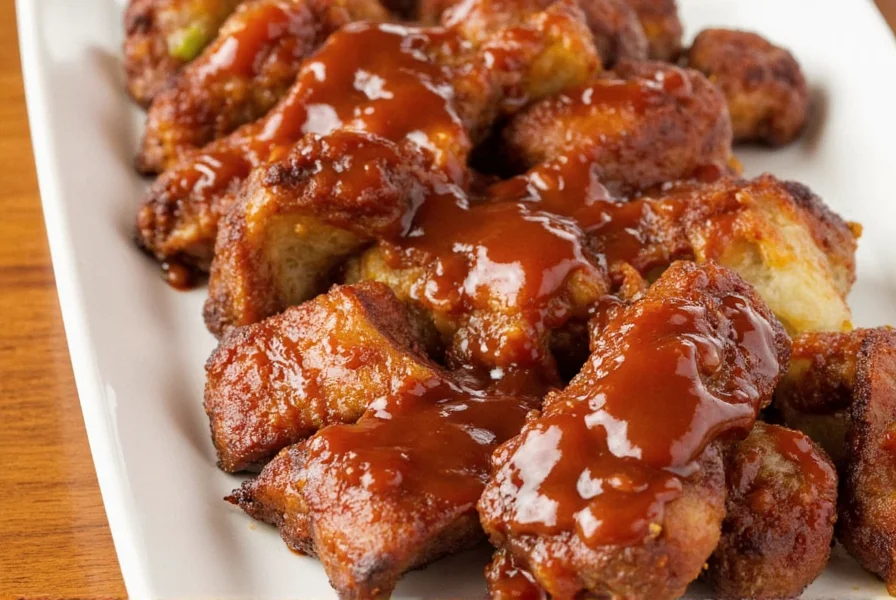
What Is in Korean BBQ Sauce?
Let's break it down:
1. Soy Sauce
The base of any good Korean BBQ sauce is soy sauce. It adds depth, saltiness, and umami. Some recipes use regular soy sauce, while others prefer Gochujang (fermented red pepper paste) for extra heat and complexity.
2. Sugar or Honey
Sweetness is key in Korean BBQ sauce. Whether it's granulated sugar, brown sugar, or honey, this ingredient balances out the saltiness and gives the sauce its characteristic caramelized finish when grilled.
3. Garlic and Ginger
Garlic and ginger are two essential ingredients in Korean cuisine. They add a pungent, aromatic kick that enhances the overall flavor of the sauce.
4. Sesame Oil and Seeds
A dash of sesame oil brings a nutty aroma, while sesame seeds add texture and a slight crunch. These elements make the sauce more layered and complex.
5. Gochujang (Optional)
Gochujang is a fermented chili paste that adds both heat and depth. If you're looking for a spicier version of Korean BBQ sauce, this is the secret weapon.
6. Rice Wine or Mirin
Rice wine or mirin helps to mellow the flavors and enhance the sweetness. It also gives the sauce a slightly sticky consistency when cooked.
7. Other Add-ins
Some recipes may include vinegar, black pepper, or even fruit like pear or apple to add brightness and balance.
| Ingredient | Purpose |
|---|---|
| Soy Sauce | Base, umami, saltiness |
| Sugar/Honey | Sweetness, balance |
| Garlic/Ginger | Aroma, pungency |
| Sesame Oil/Seeds | Nutty flavor, texture |
| Gochujang | Spice, fermentation |
| Rice Wine/Mirin | Smoothness, sweetness |
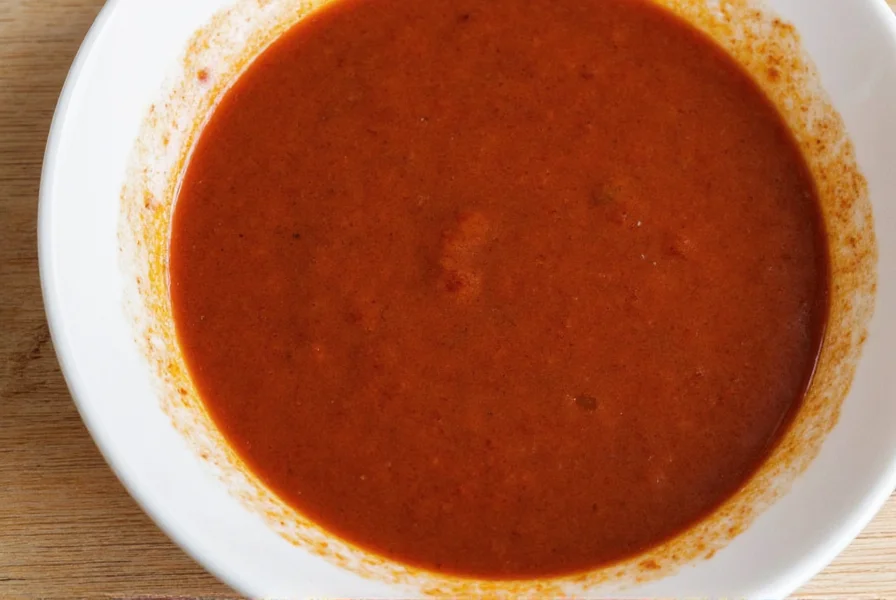
Flavor Profiles & Regional Variations
Korean BBQ sauce isn't just one flavor—it varies depending on where you go in Korea. While the basic recipe stays consistent, regional differences and personal preferences lead to unique twists. Here are some common flavor profiles:
1. Sweet and Savory (Classic)
This is the most popular type, especially in restaurants. It's balanced with equal parts sweetness and saltiness, making it ideal for grilling meats like bulgogi or samgyeopsal.
2. Spicy (Gochujang-based)
If you like a bit of heat, this version uses gochujang as the main spice. It's perfect for those who enjoy a little fire in their dishes.
3. Light and Fresh (Jjajangmyeon-style)
Some variations are lighter, using less sugar and more vinegar or citrus. This is great for seafood or grilled vegetables.
4. Smoky and Bold (Tteokbokki-style)
These versions are thicker and smokier, often used in street food or rice cakes. They pack a punch with deep, rich flavors.
Each variation tells a story of Korea's diverse culinary traditions. Whether you prefer something mild or fiery, there's a Korean BBQ sauce for every palate.
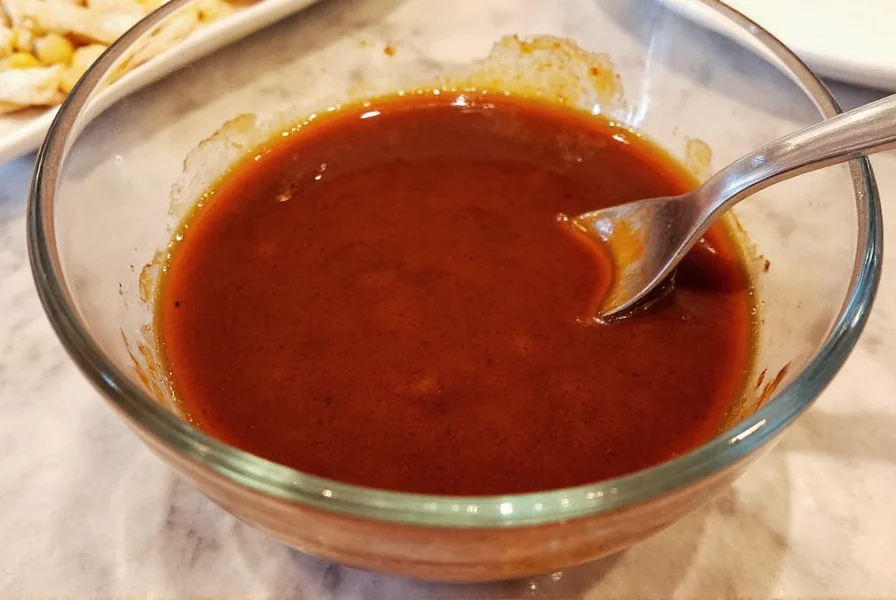
Practical Tips for Using Korean BBQ Sauce
Now that you know what's in Korean BBQ sauce, here are some tips to help you use it like a pro:
- Marinate Your Meat: Apply the sauce to beef, pork, or chicken before grilling for maximum flavor absorption.
- Brush During Grilling: Use it as a basting sauce during cooking to keep the meat moist and add a glossy finish.
- Use as a Dipping Sauce: Pair it with grilled meats, tteokbokki, or even dumplings for an extra kick.
- Mix with Other Sauces: Combine it with kimchi, soy sauce, or even mayo for a unique twist.
- Make Your Own: Experiment with homemade recipes by adjusting the sugar, spice, and sweetness levels to match your taste.
One of the best things about Korean BBQ sauce is its versatility. It can be used for marinating, glazing, dipping, or even mixing into other sauces. The key is to experiment and find what works best for you.
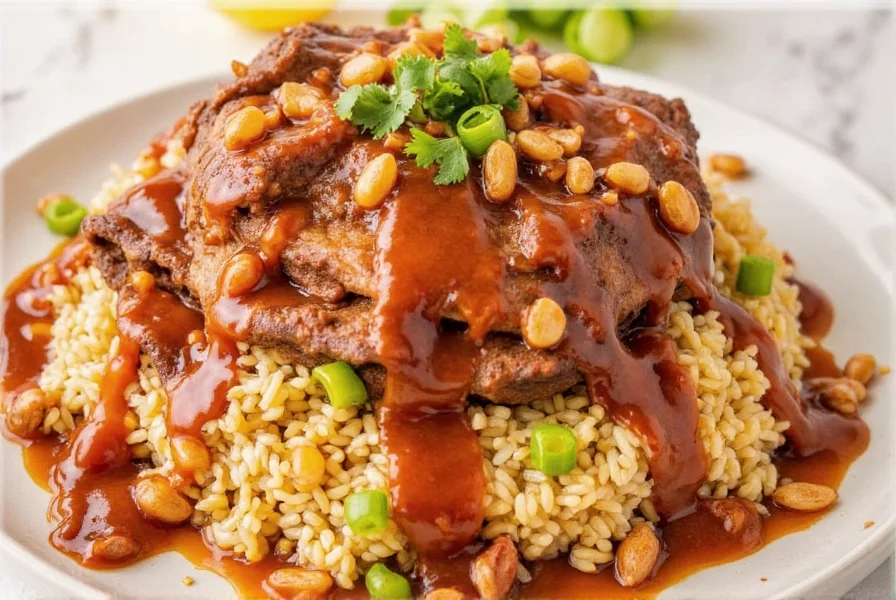
Frequently Asked Questions
What are the main ingredients in Korean BBQ sauce?
The main ingredients in traditional Korean BBQ sauce include soy sauce (for umami and saltiness), sugar or honey (for sweetness), garlic and ginger (for aromatic flavor), sesame oil and seeds (for nuttiness), and often gochujang (for heat and depth). Rice wine or mirin is also commonly added to enhance sweetness and create a smooth consistency.
Is Korean BBQ sauce the same as bulgogi sauce?
Korean BBQ sauce and bulgogi sauce are very similar but not exactly the same. Bulgogi sauce is specifically formulated for marinating thin slices of beef (bulgogi means "fire meat"), while Korean BBQ sauce is a more general term that can be used for various meats. Bulgogi sauce typically has a sweeter profile with more pear or apple for tenderizing, while general Korean BBQ sauce might be spicier depending on the recipe.
How long does homemade Korean BBQ sauce last?
Homemade Korean BBQ sauce will typically last 1-2 weeks when stored in an airtight container in the refrigerator. The preservative qualities of soy sauce and vinegar help extend its shelf life, but since it contains fresh ingredients like garlic and ginger, it's best used within this timeframe. For longer storage, you can freeze portions in ice cube trays and transfer to freezer bags once frozen.
Can I use Korean BBQ sauce as a marinade?
Absolutely! Korean BBQ sauce makes an excellent marinade for meats like beef, pork, and chicken. For best results, marinate your protein for at least 30 minutes (or up to 24 hours for tougher cuts) before cooking. The sugar content helps create a beautiful caramelized crust when grilled, while the soy sauce and aromatics infuse deep flavor into the meat.
Is Korean BBQ sauce gluten-free?
Traditional Korean BBQ sauce is not gluten-free because it contains soy sauce, which is made with wheat. However, you can make a gluten-free version by substituting regular soy sauce with tamari or a certified gluten-free soy sauce. Always check the label if purchasing store-bought sauce, as some brands now offer gluten-free options specifically formulated for those with dietary restrictions.
How spicy is traditional Korean BBQ sauce?
Traditional Korean BBQ sauce ranges from mild to moderately spicy, but it's generally not extremely hot. The heat level depends on whether gochujang (Korean red pepper paste) is included and how much is used. Many standard recipes are designed to be accessible to a wide range of palates, with sweetness balancing the heat. If you prefer spicier sauce, you can add gochugaru (Korean red pepper flakes) or extra gochujang to your taste.
Can I make Korean BBQ sauce without gochujang?
Yes, you can make Korean BBQ sauce without gochujang. While gochujang adds distinctive depth and heat, you can substitute it with a combination of ketchup, red pepper flakes, and a touch of sugar to approximate the flavor profile. For a simpler version, just omit it entirely—the sauce will still be delicious with the soy sauce, sugar, garlic, and ginger base. Keep in mind that gochujang-free versions won't have the same complex fermented flavor.
What's the difference between Korean BBQ sauce and other Asian BBQ sauces?
Korean BBQ sauce differs from other Asian BBQ sauces primarily in its flavor profile and ingredients. Compared to Chinese hoisin-based sauces, Korean BBQ sauce is typically sweeter with more pronounced garlic notes. Unlike Japanese teriyaki sauce, which is primarily soy sauce and mirin with sugar, Korean BBQ sauce often includes gochujang for heat and has a more complex spice profile. Korean BBQ sauce also tends to use sesame oil more prominently than many other Asian barbecue sauces.
Buying Guide: Choosing the Best Korean BBQ Sauce
If you're not up for making your own, buying a quality Korean BBQ sauce can be a game-changer. Here's a guide to help you choose the right one:
1. Look for Authentic Ingredients
Check the label for real ingredients like soy sauce, gochujang, garlic, and sesame oil. Avoid products with too many preservatives or artificial additives.
2. Consider the Flavor Profile
Choose a sauce based on your taste preferences—sweet and savory, spicy, or light and fresh. Some brands specialize in specific types, so read the descriptions carefully.
3. Check the Consistency
Traditional Korean BBQ sauce should be thick enough to coat your meat but not too runny. A good consistency ensures it sticks well during grilling.
4. Think About the Occasion
Are you planning a casual dinner or a party? Some sauces are better suited for home use, while others are ideal for large gatherings or outdoor grilling.
5. Read Reviews
Look for customer reviews online to get an idea of how a particular brand tastes and performs. Ratings can be a helpful indicator of quality.
Here are a few recommended products:
- Chun King Korean BBQ Sauce: A classic choice with a balanced sweet and savory flavor. Ideal for beginners and experienced cooks alike.
- Korean BBQ Sauce by Ssanghae: Known for its rich taste and authentic ingredients. Great for grilling and dipping.
- Daehan Gochujang BBQ Sauce: A spicier option for those who love a bit of heat. Perfect for adventurous palates.
Each of these products has its own unique features, making them suitable for different occasions and preferences. Whether you're cooking for yourself or hosting a gathering, there's a Korean BBQ sauce that fits your needs.
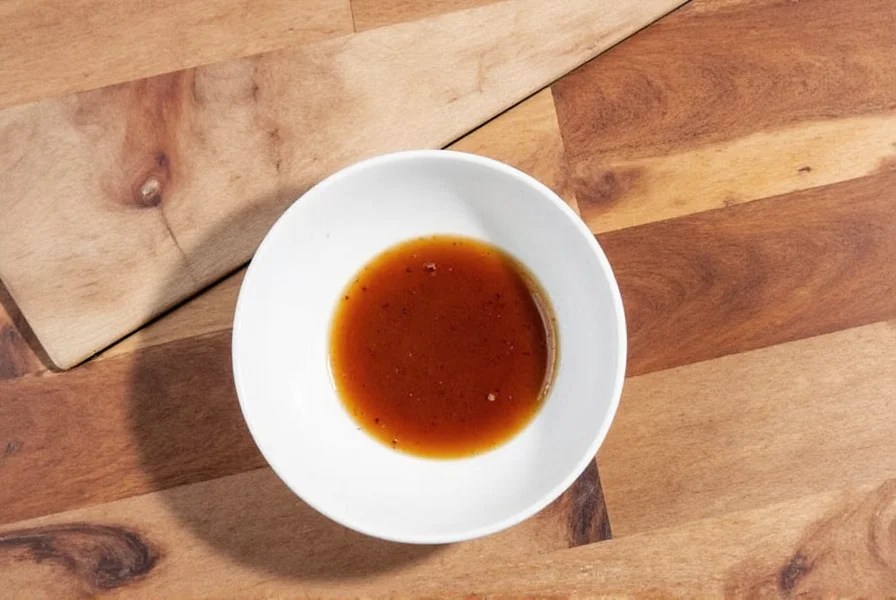
Conclusion
Korean BBQ sauce is more than just a condiment—it's a flavorful representation of Korea's rich culinary heritage. From its sweet and savory base to the optional addition of gochujang, it offers a wide range of flavor profiles to suit every taste. Whether you're a seasoned chef or a home cook, experimenting with Korean BBQ sauce can bring new dimensions to your cooking.
By understanding what is in Korean BBQ sauce and how to use it, you can unlock a whole new world of flavors. So next time you fire up the grill or reach for a bottle of sauce, remember: it's not just about the taste—it's about tradition, culture, and the joy of cooking.
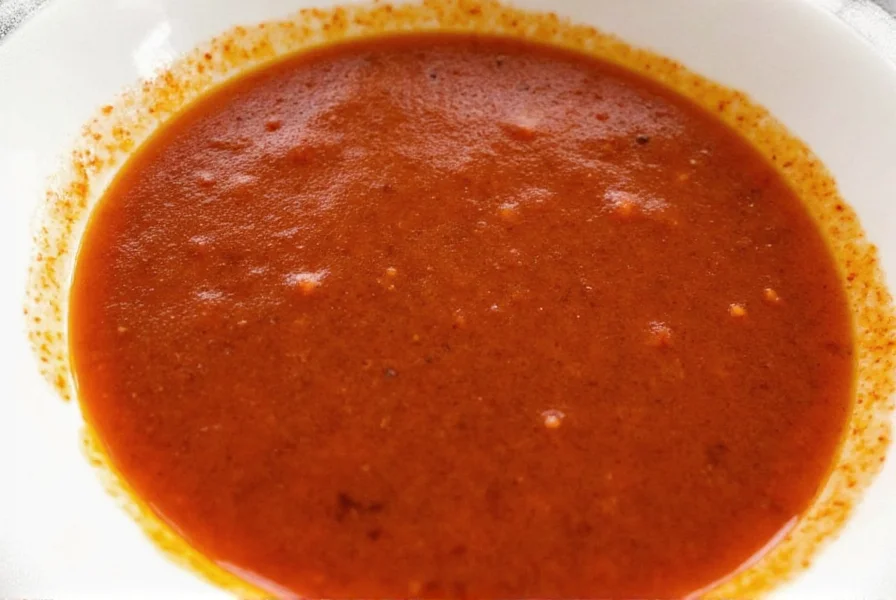

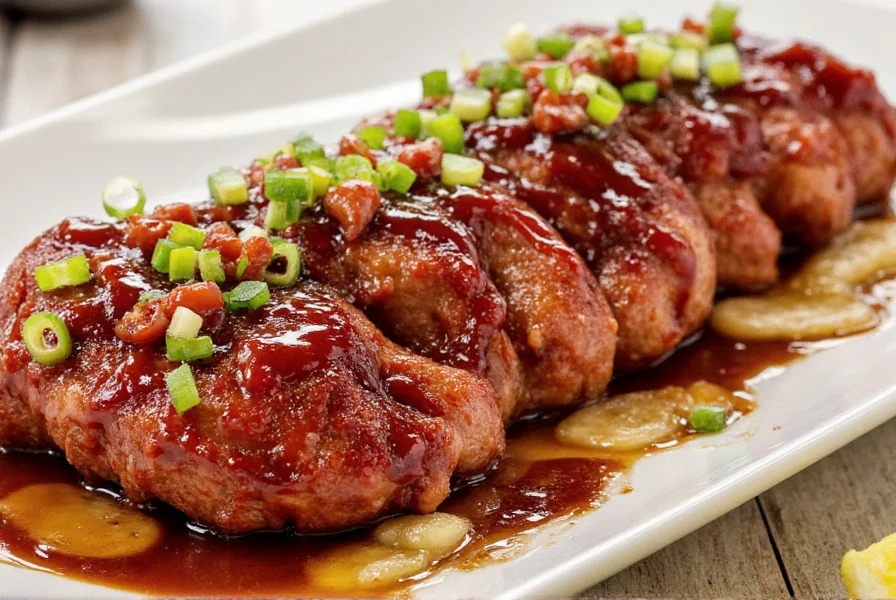









 浙公网安备
33010002000092号
浙公网安备
33010002000092号 浙B2-20120091-4
浙B2-20120091-4